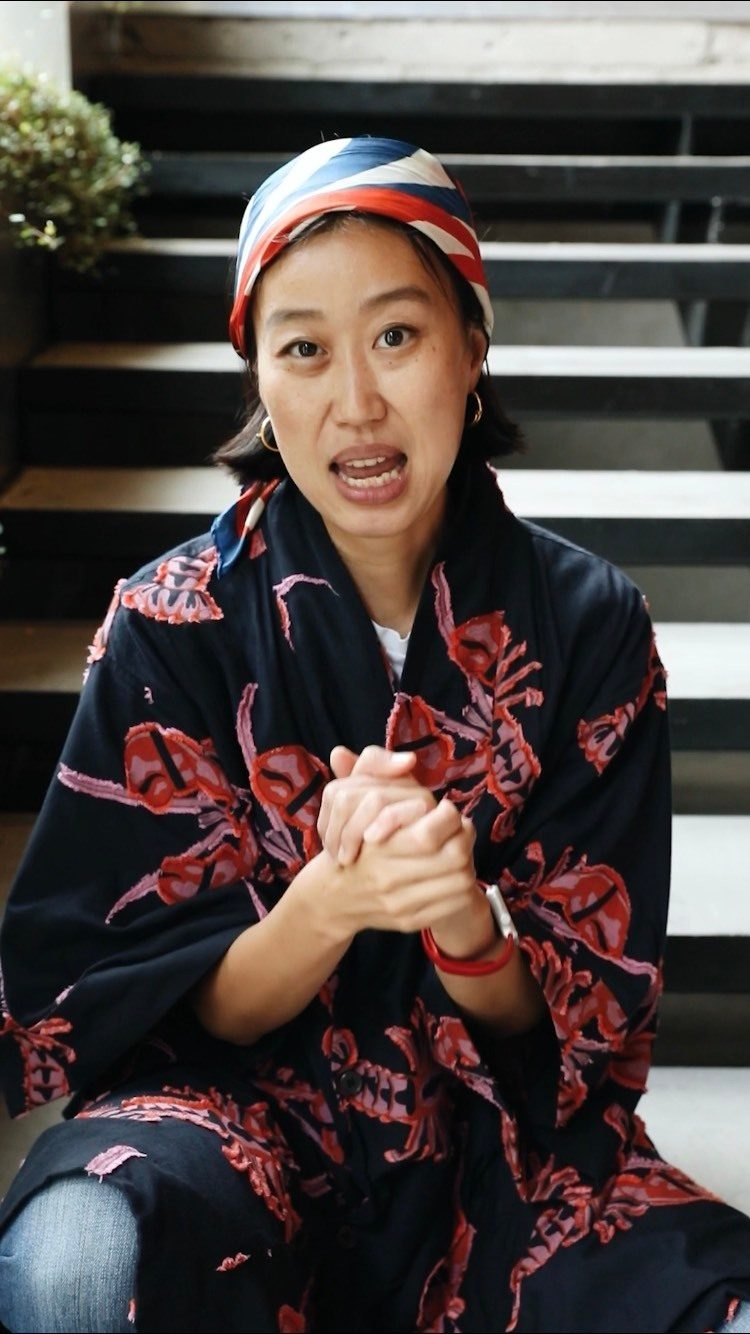Guideline for Chefs
These guidelines exist to make sure people can cook with confidence from you; we’ll show you how to film and give a few tips to make it easier.
We won’t lie, there is work to be done, but it’s smart work that will create a new net revenue for the rest of your life; welcome to the magic of owning your Food Intellectual Property (Food IP).
Let’s get started.
BASICS
Cover + Intro + Steps
You need to capture some videos and photos, and after that our own CREME Studio will edit and publish for you for FREE.
Cover
Intro
Steps


A photo of your dish, the first impression that will draw people in.
Short intro of you and the dish through mouth-watering scenes.
Step-by-step through short videos of up to 15s per step.
PRE-SHOOT
Cooking Blocks
Think about the cooking blocks as components of your dish and film them separately to maximize the volume of the recipes you're shooting. For example, a spaghetti bolognese dish has multiple cooking blocks:
1. Fresh spaghetti pasta
2. Bolognese sauce
3. Pangritata
4. Spaghetti bolognese
One full dish and three cooking blocks; a vegetarian could cook the fresh pasta and the pangritata blocks, which gives you better reach and range, and you don’t have to reshoot how to make fresh pasta for every new recipe that uses it.
When shooting make sure you don’t have any ingredients of another block visible in the scene you're currently shooting, so the blocks can be re-used to assemble other dishes.
TIPS 💡
• You should be able to shoot between 6 to 10 cooking blocks per shoot day, a full dish can have from 2 to 6+ cooking blocks
• A part of a dish can become additional content. For example: preparing the onion for the bolognese sauce can become a video on how to make a brunoise cut. A seafood dish can also become a tutorial on how to clean and prepare an ingredient, e.g., a shrimp or a lobster.
• If a dish, or a cooking block, has a step that takes too much time to cook or to cool down, think of blocks or quick dishes that can be done in the meantime, or have the final state prepared in advance so you have the before and after.
Content Strategy
High Engagement
• Easy recipes
• Recipes with 12 steps or less
• Recipes with 6 ingredients or less
• Vegetarian recipes
• Vegan recipes
Low Engagement
• Recipes with 12 ingredients or more
• Recipes with 36 steps or more
• Recipes with expensive ingredients
• Recipes that rely on professional equipment
• Mayos (vegan and flavored options are fine)
• Simple syrups
• Brown butter
Write down the steps
Write down the steps before the shoot and share with everyone involved. It’ll guide you and the production partner during the shoot. Consider the list of ingredients that are needed for each cooking block and their amounts, as well as ingredient substitutions—these will be especially important if the ingredients are hard to find, seasonal or region-specific. Remember that people from all over the world will cook your recipe! The written recipes at this stage don’t need to be final either, you can edit later when you submit all the final materials to CREME, in case you make any adjustments during the shoot.
Where to shoot
Shoot wherever it's easiest for you — whether that's on the counter where you usually cook, outdoors, or where you can easily meet the lighting and composition requirements. Talk to your production partner to decide the best location together, but our close up and vertical format should reduce the pressure of a staged kitchen; you can cook almost anywhere.
Talk to your production partner about procuring a portable cooktop and/or prep table ahead of the shoot. Lighting (preferably natural light) will be very important to ensure all your footage is clear to the viewer, and most kitchens don't have ovens or countertops next to windows, so you'll want flexibility to move around within the space.
Choosing utensils
Avoid using professional tools that most home cooks don’t have. It’s okay to use professional tools that have similar versions in home kitchens, like blenders or a stove, but the result should not be radically different from what can be achieved by a home cook.
SHOOT-DAY
Before recording starts
Elements to capture
Clean the entire surface where you're cooking. Remove items that aren't part of the recipe itself – the food and processes should always be the focus. Separate the ingredients for each recipe into different containers / bowls that are unmarked (no brands, labels or logos visible). The ingredients can already be weighed, and you have two options:
1. Full Mise en Place: Shoot the whole process of preparing the ingredients: cut, slice and dice each and every ingredient.
2. Skip Full Mise en Place, but leave at least one of each ingredient to be shot: Have most of your ingredients already cut, sliced, diced, etc. But leave at least one of each ingredient whole or unprepared, as it is necessary to show the viewer how to prepare the ingredients (even the simplest of tasks).
Tips for teaching a recipe
Take your time
Make sure everything is visible
Execute one step at a time
Show the results
Pause between steps
Show how to plate
Don't flow immediately from one step to the next, as it can blend two steps and create confusion for the viewer.
If you want to show a step up close, avoid getting the food really close to the camera as it will get out of focus. Try to handle, point, show, always close to the action spot.
Each step should only have one action. You don’t slice and mix at the same time, you slice and then you mix.
When explaining a desired result of a step — like browning, temperature of the meat, smoothness, crispiness, etc. — show it so viewers have this as a reference to compare with what they're doing.
Execute. Pause. Repeat.
We need at least one plating shot, but feel free to do multiple ones if you'd like. Each different plating should have its own video clip.
Remember to capture these five elements during the shoot, for each recipe that is being filmed:
• Chef's portrait: your portrait, either posed or in-action;
• Steps: video of the entire recipe from start to finish;
• B-roll: any content that could be used in the intro, either images of unique ingredients, food beauty shots (sauce drizzle on top of the dish, an egg yolk running), you tasting the dish, etc;
• Cover: photos of the completed, plated recipe, either a cooking block or a full dish;
• Intro: record yourself talking about the recipe (used in the trailer).
Recipes and personal intro
You can record your intros either standing up behind the counter or even seated down with a glass of wine, whichever way you feel comfortable to do so.
Recipes: All recipes and cooking blocks have a short (1-min max) trailer. Remember, it’s about the dish, so you do not need to introduce yourself, go straight into the recipe, here are 6 questions that can be answered about each recipe:
1 - What is it? Tell us more about this block/dish
2 - What do you like about this block/dish and when do you normally cook it?
3 - When was the first time you prepared it?
4 - Any funny stories or special memories associated with it?
5 - What is your inspiration?
6 - For what occasion?
Here's a recipe intro for Æbleskiver, by chef André Skjødt Andersen.
Personal Intro: 5 questions that must be answered for intro video be made, focus on yourself, not the restaurant:
1 - What is your name and when did you decide to become a chef/work with food? Tell more about your journey into cooking
2 - Where have you learned to cook and what's your cooking experience?
3 - What is your cooking philosophy?
4 - What is your culinary inspiration?
5 - What do you enjoy cooking the most?



If you don't want to show yourself on camera or if the shooting location is too noisy, we will edit using footage from the recipe and a background track.
Delivering the content
Your production partner will do most of the work here, but don't forget to share the written recipes with them and with us. These will be required along with your footage to be approved, edited and published, and we'll follow up after your shoot with forms for you to fill out that will help us to make sure we have all the information we need from you about your recipes to get them published on CREME (and to make sure you get paid!).
POST-SHOOT
MORE
Tips & tricks
• Always have extra ingredients, and pay attention to their quality.
• Watch out for dishes that lose freshness, oxidize, wither, or dry out. The ideal is to present ingredients that look as appetizing as possible.
• Remember that your hands will be shown during the whole recipe, sometimes on really close up shots. It’s recommended to clip your nails and clean up and hide any visible cuts
• Plan a full day of shooting; filming is quite demanding, and needs your full attention; and if shooting at a restaurant, avoid days when it’s open.
• We strongly recommend having an assistant (sous chef or otherwise) with you on the day of the shoot, as they can help not only with the mise en place and other cooking processes, but can also write down and review each recipe's steps while you cook.
Plan the recipes you want to make;
Write down the recipes before the shoot;
Have all ingredients and tools;
Make sure you book a full day (6-8 hours) for the shoot;
Fill out the required forms from CREME that we'll share after your shoot.
Checklist
Plan the recipes you want to make;
Write down the recipes before the shoot;
Have all ingredients and tools;
Continuity and consistency is key: avoid changing clothing, acessories and appliances during the same recipe
Make sure you book a full day (6-8 hours) for the shoot;
Fill out the required forms from CREME that we'll share after your shoot.
